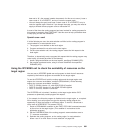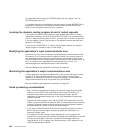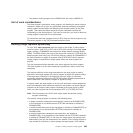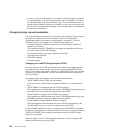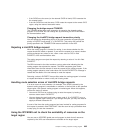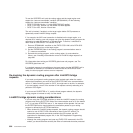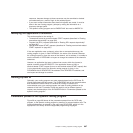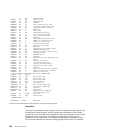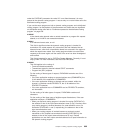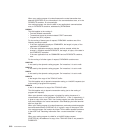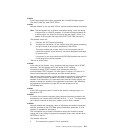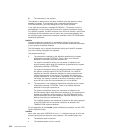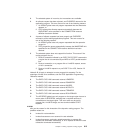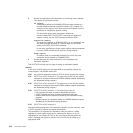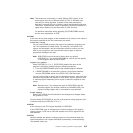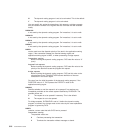under the DYRFUNC parameter the value X'5' is not listed because it is never
passed to the dynamic routing program—it occurs only on a route initiate call to the
distributed routing program.
If you use the same program as both a dynamic routing program and a distributed
routing program, for descriptions of the parameters and values that are significant
on distributed routing calls refer to “Parameters passed to the distributed routing
program” on page 645.
DYRABCDE
is the abend code returned when a routed transaction or program-link request
abends, or a Link3270 user transaction abends.
DYRABNLC
is an abnormal event code, or null.
This field is significant when the dynamic routing program is invoked for
termination of a routed request. Any value other than null indicates that an
abnormal event, other than a transaction abend, has occurred in the region to
which the request was routed. Your routing program should not route further
requests to the same region until the cause of the error has been investigated
and rectified.
This field is intended for use by CICSPlex System Manager. Currently, it is set
only by DB2. For more information, see the CICS DB2 Guide.
DYRACMAA
This field applies to the routing of:
v Terminal-initiated transactions
v Transactions started by terminal-related START commands
v Program-link (DPL) requests
For the routing of these types of request, DYRACMAA contains one of the
following:
v If the user application employs a communications area (COMMAREA), the
31-bit address of the application’s COMMAREA
v If the user application employs a channel and has created, within the
channel, a container named DFHROUTE, the 31-bit address of the
DFHROUTE container
v If the user application has no COMMAREA and no DFHROUTE container,
null characters
For the routing of all other types of request, DYRACMAA contains null
characters.
For the routing of the three types of eligible request listed above, if the user
application employs a COMMAREA:
v When your dynamic routing program is invoked for routing (DYRFUNC=0),
the address is that of the input communications area (if any). Likewise, when
your routing program is invoked because of a route-selection error or for
notification (DYRFUNC=1 and 3, respectively), the address is that of the
input communications area.
v When your routing program is invoked because a previously-routed
transaction or link request has terminated normally (DYRFUNC=2), the
address is that of the output communications area (if any). Routed
applications can use their output communications area to pass information to
the dynamic routing program.
Chapter 17. Writing a dynamic routing program 609



